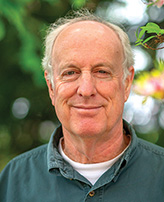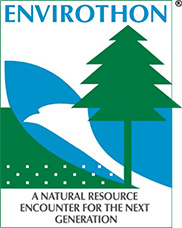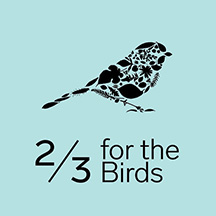YOU MIGHT JUST SAVE THE WORLD
By Douglas W. Tallamy
UNFORTUNATELY, we humans are now in a position to declare victory in our long war on insects. The United Nations’ Global Assessment Report on Biodiversity and Ecosystem Services has found 1 million plant and animal species, mostly bugs, to be at imminent risk of extinction. Industrial agriculture, millions of miles of road hazards, unnecessary lights, overuse of pesticides, habitat elimination, tens of millions of acres of sterile lawn and the widespread displacement of native plants have caused a 45 percent decline in insect populations just in the past 40 years.
Originally published in the Washington Post on Feb. 20, 2020
To understand how terrifying this is, you need only look to a 1987 article from the journal Conservation Biology, in which the biologist E.O. Wilson laid out a worst-case scenario. If insects were to vanish, he explained, so would nearly all flowering plants and the food webs they support. This loss, in turn, would cause the extinction of reptiles, amphibians, birds and mammals: in effect, nearly all terrestrial animal life. The disappearance of insects would also end rapid decomposition of organic matter and thus shut down nutrient cycling. Humans would be unable to survive. At the time Wilson wrote that, most of us were too interested in discovering new ways to kill bugs in our homes, lawns, crops and forests to think about how we might coexist with these essential creatures. Now we’re facing the consequences.
The good news is that there is nothing inevitable about insect decline. Each one of us can work to bring back those populations by collaborating on what I call the “Homegrown National Park,” a collective preserve built in and out of our own private yards.
About 73 percent of the continental United States is privately owned, so only landowners can lead our future of conservation. Our public parks and preserves are vital, for they are where biodiversity is huddling; but they are not large enough and are too isolated from one another to sustain for much longer the plants and animals that support our ecosystems.
So, what if each American landowner converted half of his or her yard to productive native plant communities? Even moderate success could collectively restore some semblance of ecosystem function to more than 20 million acres of what is now ecological wasteland. That’s more than the combined areas of the Everglades, Yellowstone, Yosemite, Grand Teton, Canyonlands, Mount Rainier, North Cascades, Badlands, Olympic, Sequoia, Grand Canyon, Denali and the Great Smoky Mountains national parks.
A green carpet out front may be a status symbol, but it’s an ecologically destructive one that is, in total, the size of New England. Lawn grass does not support diverse food webs and vital pollinator communities: It degrades our watersheds by increasing storm water runoff and introducing nitrogen and phosphorus as well as herbicides and pesticides into our waterways. It is also a terrible plant choice for sequestering carbon. Under trees, grass fares poorly in the shade and is bad for the tree’s root systems. Restrict your lawn to the areas where you regularly walk.
You can and should strip invasive plants, such as burning bush, Callery pear, privet, autumn olive and wisteria, from your property and resist the temptation to buy new ones at your local nursery. By definition, they are ecological invaders that spread to natural areas, where they displace the valuable native plant communities that better support insects. Simultaneously, you can plant more of the native plants that support the most insect species: Homeowners in all but the driest areas of the country should plant oaks, while those who want meadows should be sure to have goldenrod, asters and sunflowers. In general, native plants support the life cycles of 10 to 100 times more insect species than nonnative plants, and a few plants (such as native cherries and willows) serve as hosts for 10 to 100 times more insects than most other native varieties. You can find out which plants are best at supporting food webs in your county by visiting the Native Plant Finder at the National Wildlife Federation website. [nwf.org]
When you’re working to maintain that garden with all of its native vegetation, you should strive to minimize insecticide use. Homeowners use more insecticides per acre than farms do, and nearly all of them are unnecessary. Your goal is to bring bugs to the yard, not keep them away! Avoid mosquito fogging, which, contrary to what many companies tell you, relies on pyreth-roids that kill nearly all the insects they contact, not just adult mosquitoes. Mosquitoes are best controlled in the larval stage with targeted products like mosquito dunks (Bacillus thuringiensis) that kill nothing else.
You can also build pollinator gardens – groups of plants with blooms that supply the pollen and nectar that critical insects require. We need diverse communities of pollinator insects not only because they are important to human crops but because they pollinate 80 percent of all plants. Although declines in honeybee populations have gotten a lot of press, 4,000 species of native bees pollinated the vast majority of the plants in North America before we introduced the honeybee from Europe. Most of these native bees are suffering from our tendency to replace blooming native plants with lawn and concrete. Plants like goldenrod, asters, sunflowers, violets, evening primrose and native willows are best at supporting native bees, and they attract generalist pollinators like honeybees and bumblebees as well.
Lastly, you can put motion sensors on your security lights or replace white bulbs with yellow LEDs. White lights draw insects all night long, exhausting them and making them easy prey for bats and birds, but yellow bulbs attract few insects. If each of the millions of lights we turn on in this country, mostly out of habit, kills just a few insects each night – well, you can do the math.
We can no longer leave conservation to professional conservationists; there simply are not enough of them. Along with land ownership comes responsibility for stewarding the life associated with that land. The task is not as enormous as it seems. Just take care of the life on your property. It seems a lot easier than trying to save the entire planet, but they’re really the same thing. You can’t reverse insect declines by yourself, but if we each do our own small part, not only can we restore insect populations, we will create the largest collective conservation effort in history – one that can and must succeed, for our own good.
Douglas W. Tallamy is the author of Nature’s Best Hope: A New Approach to Conservation That Starts in Your Yard. He is a professor of entomology in the Dept. of Entomology and Wildlife Ecology at the University of Delaware.





